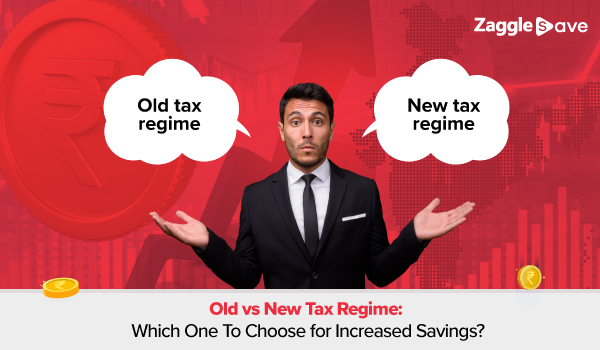Most people hate filing for taxes. It is a tedious process that requires quite a bit of hassle in getting your documents ready and ensuring that all your calculations are spot on. One major factor that contributed to the complexity of tax filing as per the Indian Income Tax Act is the catalog of deduction options that salaried professionals can leverage. The Indian government initiated a new income tax plan in Budget 2020, which enabled a seamless tax filing process, with lower tax rates. However, the new tax regime was without tax exemptions. Since people continued with the old tax regime, the government tweaked the new regime in 2023. Now, the new regime had comparatively better tax rates, along with a total tax rebate of up to Rs. 7 lakhs.
The new provisions for the new tax regime changed things as it became more attractive, at least on paper. If you are wondering how old and new tax regimes are fair and which one you should choose, this article is for you. Let’s discuss these two tax regimes and their unique benefits.
New tax regime
The new tax regime is an optional tax rate system introduced in 2022 with the aim to simplify complex tax structure and processes. It is the system where tax slabs were lowered offering taxpayers concessions that they can leverage instead of claiming multiple exemptions and deductions. Although initially, there were not many takers for the new tax regime, the government reduced tax rates including exemption from the process for salaried professionals up to Rs 7 lakh income to attract more people.
Benefits of the new tax regime
- The new tax regime provides ease of filing taxes, eliminating the need to manage and submit claims for multiple reductions. It will save time and effort for people who aren’t familiar with the taxation process.
- The new regime offers significantly lower tax rates as compared to the old regime, which essentially means you have higher spending power.
- Salaried professionals filing for taxes don’t have to worry about compliances with most deductions removed.
- With the new regime, employees have the flexibility to make their own investment decisions based on their unique financial goals without tax implications.
Old tax regime
The old regime is the standard tax system that prevailed before the new regime was introduced in 2020. It provides taxpayers with a whopping 70 exemptions and deductions like HRA (House rent allowance), LTA (Leave travel allowance), and other allowances, giving them the option to reduce their tax liability by lowering their taxable income. The most popular deduction among them is Section 80C, which lets you reduce your taxable income up to Rs 1.5 lakh. The tax rates under this regime, however, are higher than in the new regime.
Benefits of the old tax regime
- The old tax regime allows you to significantly reduce your tax liability through deductions and exemptions under various sections.
- You have the convenience of aligning your financial goals with tax-saving investment opportunities like PPF, ELSS, and ULIPs under Section 80C.
- The old regime incentivizes professionals who have home loans by claiming deductions on interest paid along with the principal amount.
- Your healthcare-related purchases like hospital and medical bills, and health insurance plans can be waived off through tax relief on medical expenses.
- The old tax regime teaches the discipline of saving for larger life goals like education, and retirement by mandating tax-free investments.
Inclination towards Old Tax Regime
An overwhelming majority of salaried professionals are favouring the old tax regime for various reasons even though the new regime is designed to simplify tax structure along with lower tax rates. The old tax regime makes for a better option if you want to save for the future. Since it rewards healthy savings discipline via deductions under Section 80C for investments in instruments like PPF, ELSS, and NPS. It will not only reduce your taxable income but also secure your plans. Additionally, it will allow you to prioritize health for yourself and your family members through deductions on medical expenses. Beyond the hassle of getting your paperwork ready and submitted for ITR filing, the traditional system prepares you for any financial challenges in the future and makes you a disciplined person.
For a detailed understanding of factors that go into choosing between either of the regimes, check out our white paper.
Interestingly, employers are leveraging exemptions offered in the old tax regime to offer competitive and employee-centric benefits plans. By offering a well-rounded compensation package with tax-saving allowances for food, fuel, travel, and education, employers are seeing better retention and recruitment rates.
Save under the old tax regime by utilising Zaggle SAVE
Although the old tax regime provides a range of deductions and exemptions, companies find it challenging to manage them efficiently. For this, fintech unicorn Zaggle has designed an automation solution Zaggle SAVE that allows businesses to streamline their flexible benefits plan through a range of features. It also provides an all-in-one card that employees can use to utilize their benefits and centralize fund management.
Download our free white paper to learn how Zaggle SAVE can help you utilize tax-saving benefits in the old tax regime.


